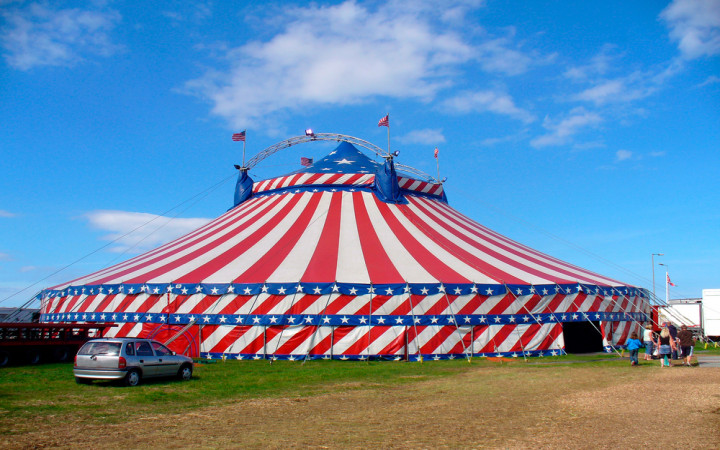Today’s Wonder of the Day was inspired by Sadie. Sadie Wonders, “Who created the first circus?” Thanks for WONDERing with us, Sadie!
Is there a greater show on Earth than the circus? Many think not! That huge tent brings joy and excitement to many kids around the world. From clowns and animals to aerial acrobats, the circus has a lot to offer.
Have you ever WONDERed how long circuses have existed? Many people think the circus got its start in ancient Rome. However, it’s actually much more modern than that. The Roman circus was more like modern racetracks. The only thing it had in common with the modern circus was its name.
The father of the modern circus was Englishman Philip Astley. He learned to train horses in the Seven Years’ War. After the war, he used his talent with horses to become a showman.
In the late eighteenth century, Astley combined his horse show with other elements of theater. The show took place in a circular arena. What did he call it? The circus, of course! (Circus means “circle” in Latin.)
To keep his show from getting boring, Astley added new acts over time. Between horse acts, there were acrobats, dancers, and jugglers. He also added a character from local theater: the clown.
Within a few years, the modern circus had been created. Over the next decade, it grew in popularity. Circuses opened in France, Russia and the United States.
These early circuses had permanent homes in large buildings. In the young United States, though, there weren’t many cities large enough to hold a permanent circus building.
To reach more people, circuses started traveling. In 1825, Joshuah Purdy Brown was the first to use a large canvas tent instead of a permanent building. Over the next decade, traveling circuses began to move by train.
Circuses also got bigger. The size of the tents grew as more rings were added. Circus owners brought exotic animals from around the world to join the shows. Some circuses boasted as many as seven rings and stages under the tent. Eventually, the tent became known as “The Big Top.”
However, it hasn’t all been fun and games for modern circuses. They’ve come under fire for their poor treatment of animals. Additionally, circuses have a history of putting people with physical differences on display for others to gawk at. For many audiences, the living conditions of these people and animals make the circus lose its luster.
Today, some circuses have a more humane approach. They rely on talented performers to awe audiences with tricks and acrobats. Have you ever been to this type of circus? What tricks and talents would you like to see?
Standards: CCRA.L.3, CCRA.L.6, CCRA.R.1, CCRA.R.2, CCRA.R.4, CCRA.R.10, CCRA.W.1, CCRA.W.9, CCRA.L.1, CCRA.L.2, CCRA.SL.1, CCRA.SL.2




